#aniline dyes
Text
FWIW, "mauve" was one of the coal-tar dyes developed in the mid-19th century that made eye-wateringly bright clothing fashionable for a few decades.
It was an eye-popping magenta purple
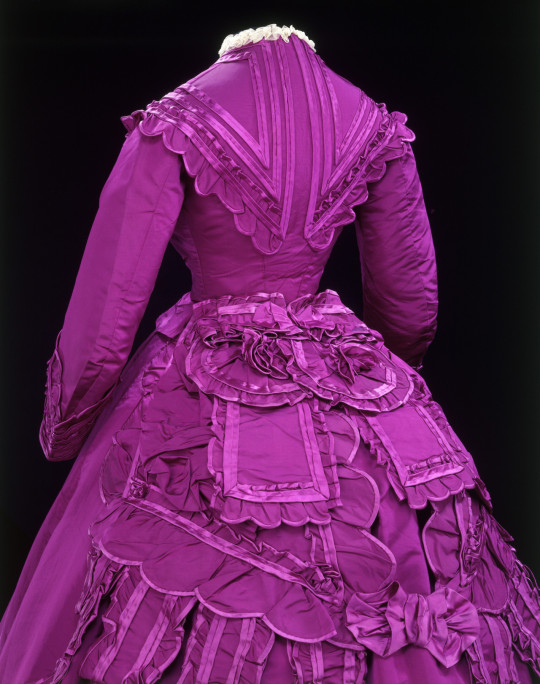
HOWEVER, like most aniline dyes, it faded badly, to a washed-out blue-grey ...
...which was the color ignorant youngsters in the 1920s associated with “mauve”.
(This dress is labeled "mauve" as it is the color the above becomes after fading).

They colored their vision of the past with washed-out pastels that were NOTHING like the eye-popping electric shades the mid-Victorians loved. This 1926 fashion history book by Paul di Giafferi paints a hugely distorted, I would say dishonest picture of the past.
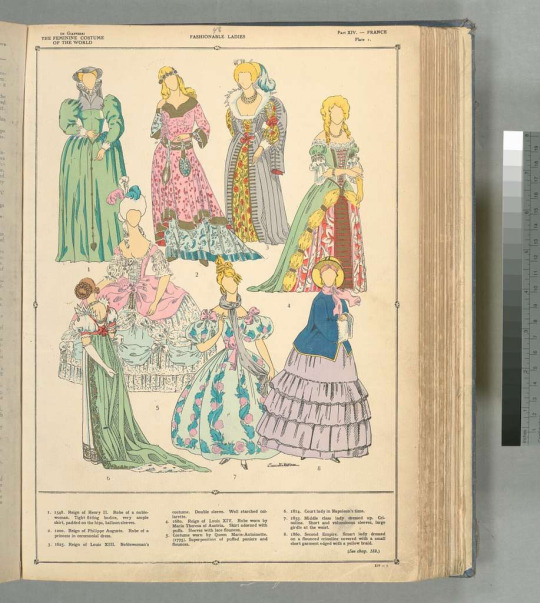
Ever since then this faded bluish lavender and not the original electric eye-watering hot pink-purple is the color associated with the word “mauve”.

23K notes
·
View notes
Text
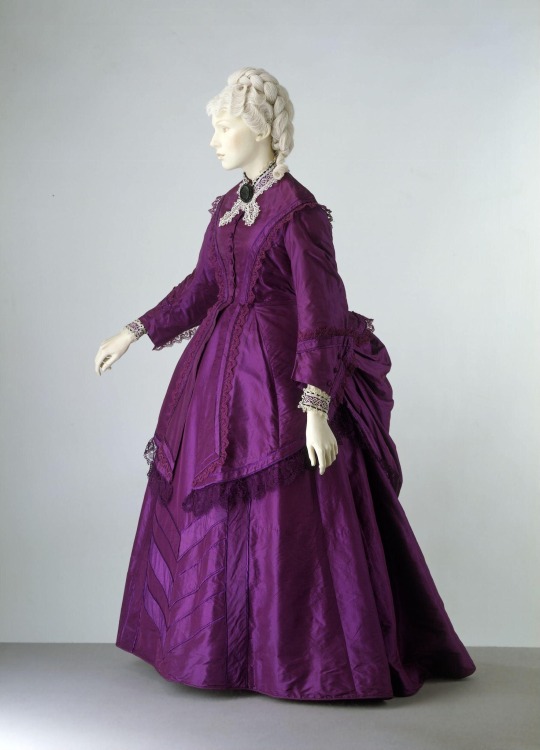
Purple silk day dress, 1870-1873, British.
Victoria and Albert Museum.
#aniline dye#womenswear#extant garments#dress#silk#19th century#V&A#purple#1870#1870s#wedding#1870s wedding#1870s britain#Britain#wedding dress
102 notes
·
View notes
Note
Hello! I love your blog bc it helps me a lot with writing and crafting. Thank you so much for making it!
Are there any patterns that deal with poison? Either in the pattern or in the dyeing process?
Even if there's not I'm glad you and this blog exist 💗
(anon continues) Poison in the dyeing process, like when green dresses were dyed with copper arsenite and it was extremely deadly.
Or a pattern of someone being poisoned, like a historical/folktale.
_______________________________________
Thank you for your kind words <3 I tried to keep things organized but the subject is huge so my of the top of my head answer is going in many directions. I hope you'll still find what you need :3
I'll briefly cover here dyes and (pigments), poison motifs, real life and supernatural poisonings. Buckle up we've got a long post ahead!
____ ABOUT DYE
Tbh I had to think for a moment because I don't recall major "poison" stories linked to dyes in Japan, be it fictionous or real (yet that doesn't mean none ever happened, especially considering Japan's history of industrial poisonings...).
Most gruesome details in the fabric industries I know of are about the horrific life & work conditions of female laborers in spinning mill manufactures (as in many countries, Japan industrialization process was ghastly...).
If potters and dyers had excellent practical knowledge, chemistry as a science officially started kind of late in Japan as it was not a local interest, and as rangaku (study of Western knowledge) often favored other subjects like medicine or warfare.
So, until the introduction of aniline dyes (not textile related, but this article about the use of synthetic dyes in ukiyoe printing is super interesting), Japanese worked with "natural" dyes, like ai (indigo) which was the most used during Edo period.
As with any ingredient, being natural doesn't equal safety. Some mixtures could be quite potent/foul, and process could be dangerous. Plants and minerals base ingredients could be toxic (cinnabar and orpiments were then used as paint pigments, and lead could be found in make up), as were mordants used to set colors.
If you want to easily overview which ingredients were used to create colors, I recommand browsing [Irocore] which presents colors with explanation in English in their database (pick a color then scroll down).
Not related to poison, but ai (indigo) is traditionally prepared in aigame/enormous floor set jars I find utterly terrifying:
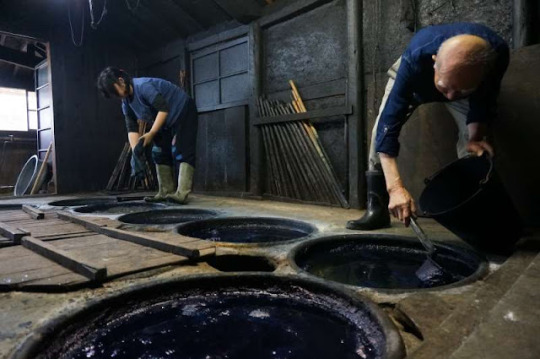
I don't know if this tidbit can help you, but some dyes and mordants actually damage the fabric overtime, leaving them brittle (silk desintegrates after a while which is a huge issue in textile conservation).
____ POISON MOTIFS
Concerning "poison" themed patterns, none would be actually used traditionally on a kimono or an obi beside novelty items ^^;
For example, many plants can be toxic, but I don't see them set as pattern for this property - they'd rather refer to a poem, be a symbol of the passing of seasons etc. Fuji (wisteria) can be quite harmful, yet it's a beloved traditional motif in Japan.
You have much more chances to find pattern with kujaku (peacock) which are thought to be impervious to poison in Buddhism, than say venomous mukade (centipede) or the horrific ômukade (a youkai I covered in a folktale).
Snakes like the habu and mamushi are dangerous, but if used as pattern snakes are most often auspicious and linked to rain dragons or goddess Benzaiten.
If you squint hard, toxic fugu could count as poison pattern, but such a seasonal delicacy as a motif would mostly underline wealth (as those fishes are pretty expensive as they are prepared by specialized chefs), a kind of carpe diem spirit, or just a fun pattern because fugu balloon shape is cute ;)
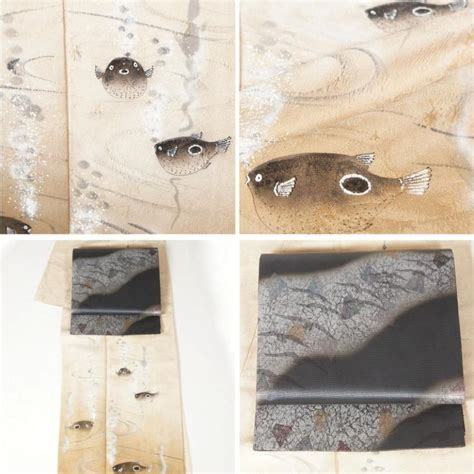
____ POISON MURDERS
Poisoning was certainly a thing is Japan since ancient times (see kodoku sorcery). Poisons were for example used in some fishing techniques.
I am pretty sure some kuge and buke were disposed of this way - even thought poison was seen as a coward weapon (hence why its supposed to be only used by shinobi/ninja - even if this "fact" is opened to a lot of discussions!).
During Edo period, such murders made up the news and penny dreadful-like illustrated books favored by city dwellers in need of a fright. But those stories didn't pass to posterity beside cheap ukiyoe plates, and were never as popular as some shinjû (double suicides) or ghost revenges like poor poisoned and murdered Oiwa's:
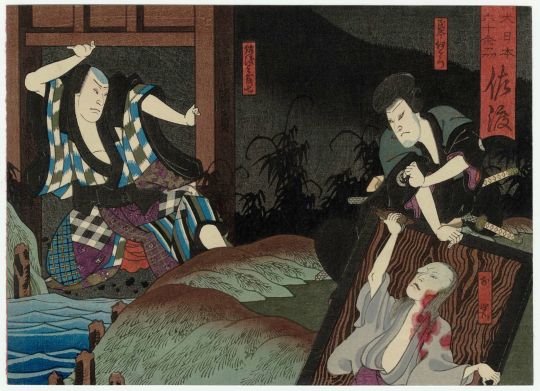
____ SUPERNATURAL POISONINGS
If your poison is both physical and metaphorical illbeing, mushi could be your guys ^^ This term actually covers everything small and crawling, from real worms and insects, to anything inside one's body causing distress - be it a parasite, an unknown illness, an overboard emotion, a curse etc. If you've read/seen Mushishi you've got what I mean:
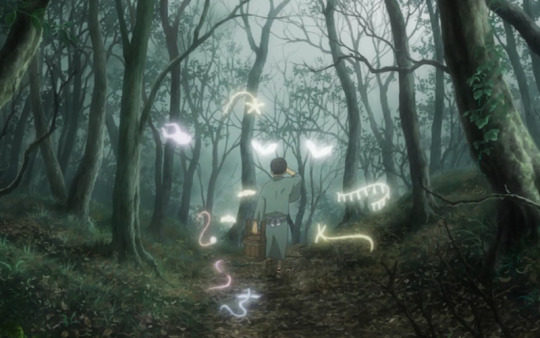
In fact any illness-causing being could count as poison-bringer. Hôsôkami (smallpox demon) was truly feared by all before vaccination was introduced in Japan.
Finally, continuing the supernatural poisoning trail, best girl is probably legendary fox witch Tamamo no Mae who among other terrible deeds made emperor Konoe fall sick with poisonous miasma (some version of the story attributes the disease to another monster, the nue). I covered a similar murderous kitsune folktale here.
#ask#japan#japanese history#dye#pattern#motif#poison#venomous#illness#natural dye#aniline dye#mordant#pigment#kujaku#peacock#mukade#centipede#omukade#youkai#snake#hebi#mamushi#habu#benzaiten#fugu#mushi#insect#mushishi#Hôsôkami#smallpox demon
110 notes
·
View notes
Text
Historical dates I am capable of remembering
ad 1066: Norman conquest of England
ad 1492: Columbus sailed the ocean blue
ad 1856: invention of the first aniline dye
#fibre nerd#textile arts#history#why am i like this#i can pinpoint lots of events to within a decade or so#but the actual numbers always escape#unless it's about aniline dye apparently
5 notes
·
View notes
Text
WE COOKED IN CHEM LAB TODAY AJCBWJBVEWJBVLKJWBVLKWV LKWVLKWN VLKWV
major missing @ozziesdisco
#prolly one of the best lab sessions maybe like ever#literally snape's potions class vibes were there ngl#shanks brewed something particularly nasty and in a surprising turn of events tried to make me eat/drink it#it's usually me wanting to try various stuff and her just stopping me#but aaj to#turntables#based on my observations I think she managed to make a barely passable draught of the living dead#in her defense tho she was never formally trained as a witch#or was she.......#also we played holi#bc hogyi aaj college vali holi#noobs use gulal while legends make do with nitrate and aniline#cause the ice war apparently wasn't enough so had a bloodbath today#we were short on ice today so#literally the dye was bright orange/red based on how well you did the denitrization#it was funnnnnnnnnnnnnnnnn
0 notes
Text
obsessed with the era of historical fashion between the 1860s and 1870s where aniline dyes kept being invented. you can find some absolute eyesores (affectionate) of dresses that were only made that way because “acid magenta” was invented last month and it was trendy.
like this iconic gown:

or this one from the 1870s in aniline purple and aniline black:

or a trendy yellow and black gown from c. 1865, perhaps?

feel free to reblog with additional eyesores (affectionate) that i might have missed
34K notes
·
View notes
Text

UNIDENTIFIED MI'KMAQ ARTIST
QUILLWORK LIDDED BOX, C. 1850
porcupine quills, organic pre-aniline dyes, softwood, birchbark, spruce root, and cotton thread
First Arts
711 notes
·
View notes
Text
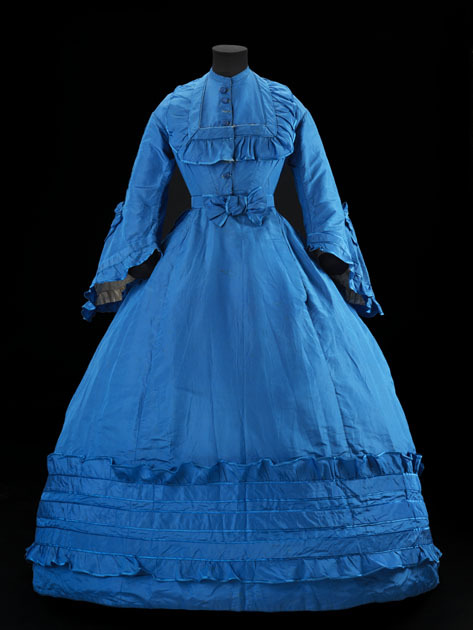

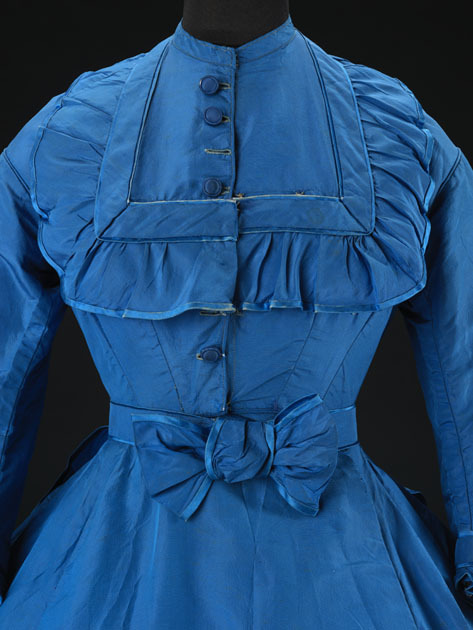
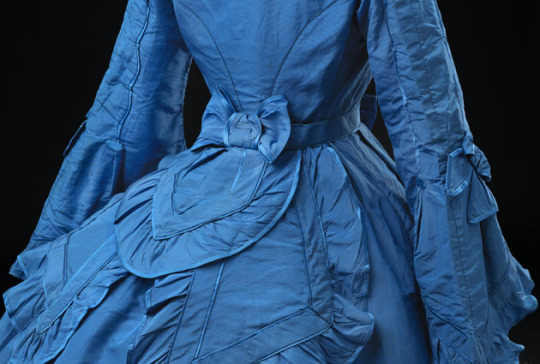
© CSG CIC Glasgow Museums Collection
That is the bluest kind of blue, and given its date (1866-1867) we know it's been dyed with the technologically cutting-edge aniline dyes of the period. As the museum (the Glasgow Museum) notes, some dresses of this era faded with time, but not so in this case.
You can already see the shape of this gown streamlining slightly, the bodice creeping toward the more tailored, masculine styles of the 1870s and 1880s. The monochrome look was very popular at the time, with the then-new House of Worth (who at the time was working with Bobergh). You can see very similar gowns from the duo at the Met, in fact, often in a gorgeous lavender hue.
#fashion history#costume#historical costuming#silk dress#textiles#costume history#threadtalk#victorian fashion#history of fashion
2K notes
·
View notes
Text
Katrin - an early 1870s evening dress

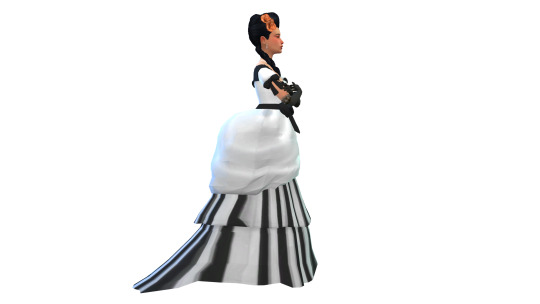
And yet another 1870s dress. No, this isn't the 200 followers gift. That one is much smaller and yet I'm procrastinating it. This is just your regular old fanciful late Victorian ballgown, featuring lots of pastels and eye strain-level aniline dyes. To give it one of my patented year ranges: it could work between the years 1868 and 1874.

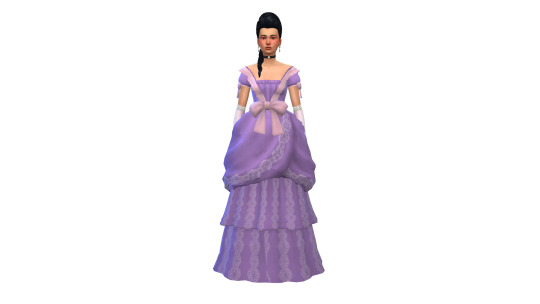


BGC
Custom thumbnail
26 swatches
Tagged as feminine
Found in the Long Dresses category
Formal, Party
Polycount: 7211
All LODs
Normal map (but no specular or shadow)
Color tagged
Display index by decade
Disabled for random
Download (SFS)
Alt Download (Mediafire)
#my cc#ts4 1860s#ts4 1870s#ts4 victorian#victorian cc#sims 4 historical#ts4 historical#sims 4 custom content#the sims 4#sims 4#sims 4 cc#ts4cc#ts4#ts4 cc#af cc#19c#fullbody
172 notes
·
View notes
Text




'Stingray' wooden spoon carved in figured Maple wood with aniline dye. Base is Cholla (cactus skeleton).
104 notes
·
View notes
Text

Female Head, Andy Warhol, circa 1958
Ink and aniline dye on paper
23 x 14 ¼ in. (58.4 x 36.2 cm)
#art#painting#andy warhol#pop art#modern art#20th century#1950s#ink#aniline#american#lgbtqia artists#queer artists
105 notes
·
View notes
Photo
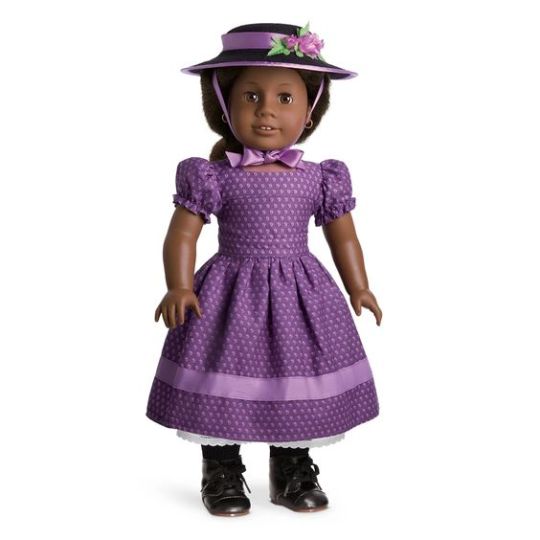
Addy’s Sunday Best is quite simply to die for. All that purple! Following the invention of aniline dye, purple was suddenly everywhere. Not just any shade of purple, a super bright shade of technicolor purple called mauvine. I wish I had a short story that went with Addy’s Sunday Best. It would have made even Harriet jealous!

263 notes
·
View notes
Text
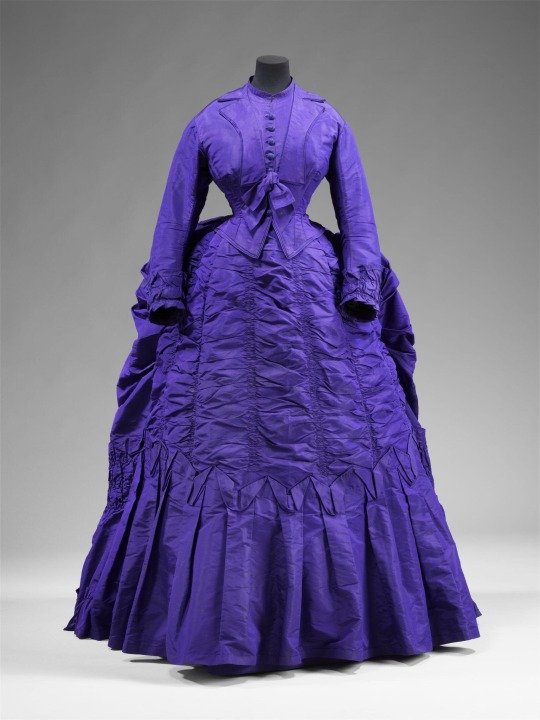
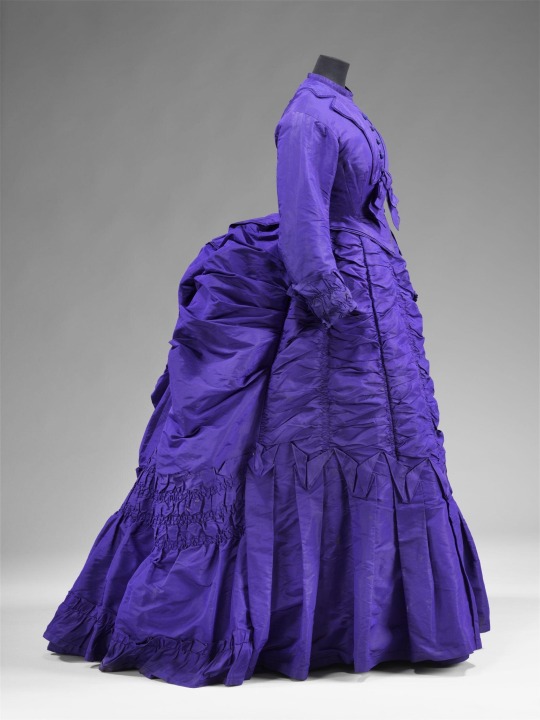

Purple silk day dress, 1873, British.
Victoria and Albert Museum.
#aniline dye#purple#day dress#1873#1870s#1870s dress#1870s britain#1870s extant garment#womenswear#extant garments#dress#silk#19th century#Britain#V&A
42 notes
·
View notes
Note
out of curiosity, is there anything that comes to mind when asked about particularly,,,,, interesting victorian fashion choices? like stuff you don’t like?
oh man. definitely. see also: Why I'm Glad I Don't Actually Live In a 1:1 Aesthetic Copy of the 19th Century. the whole "respectability = relatively current silhouette" means I'd have had to wear a lot of these things to keep up with the times if I had any sort of decent lifespan. after all, being born in the 1850s enables you to be a twentysomething or thirtysomething in the Peak Marzi 1870s-80s...but then you get to the 1890s (still decent but not ideal for me) and the slow but steady downward spiral that comes after
but the one thing I could have avoided without social censure is Eye-Searing Color Combinations:

we get it. you have aniline dyes. I will NOT be dressing in 1980s Christmas wrapping paper, thank you.
and I would definitely have limited the circumference of my Leg o'Mutton Sleeves:

the one Victorian- and earlier Georgian -undergarment that does seem 100% cumbersome, ridiculous, and pointless to me is the sleeve-plumper. I do not like puffed sleeves enough to go about with a pillow strapped to each bicep, thank you very much
another one society wouldn't care about- banish from my sight all Heart-Shaped Jewelry:
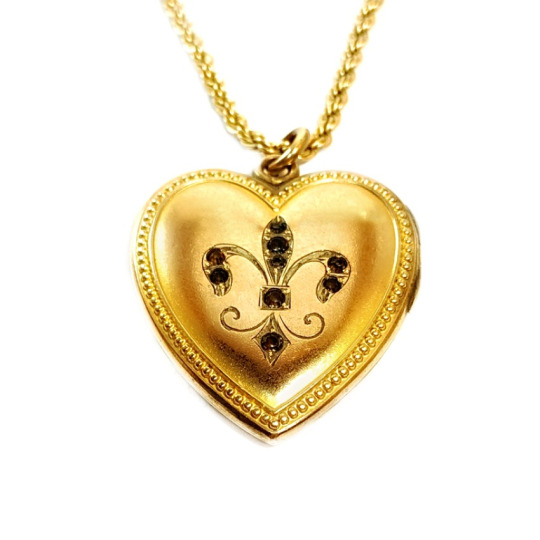
Maybe I'd feel differently if I weren't a former (19)90s girl who had all the heart-shaped plastic trinkets, but it just looks tacky to me. even in gold and gems
and your humble correspondent never will be persuaded to adopt Curly Microbangs:

This is Norwegian actress Sofie Reimers in the 1880s. And she's rocking the look; it's just. not for me.
nor yet, earlier in the Victorian era, Deceptively Simple 1830s-40s Hair Loops:

If they sat smoothly against your cheeks, they'd look nice. Instead you get this weird Faux Blunt Bob look that is just doing nothing for anyone. Not even this lovely Marina Bychkova doll lady in evening attire.
finally, I would loathe to the very depths of my soul fashion's madate to wear The Pouter Pigeon Silhouette:
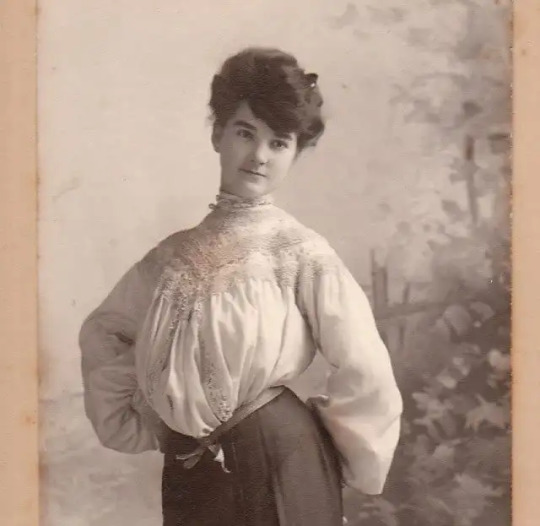
TO WHOM DOES THE "SMUGGLING BOWLING BALL IN BLOUSE" LOOK APPEAL????
113 notes
·
View notes
Text
More Dead Poets headcanons: historical (Belle Époque) edition
Is this just fully self-indulgence now? Yes. (Insert Starship Troopers gif: "I'M DOING MY PART!")
- Todd is the second son of a couturier who prefers writing fairytales about the dresses instead of doing business with them. He often slips away to go play in string quarters in little riverside bistros and sit in on writers' salons. Strictly speaking he doesn't need to sneak as nobody outside his family really knows who he is, but he does it anyway
- Neil is the contrastingly very high-profile son of a government minister who has seen Todd looking uncomfortable at various balls and recognises him one evening playing violin in the corner of a dingy little cafe, because HE'S also been sneaking out
- Charlie is a dilettante and hangs about with artists (to the dismay of his parents) and keeps the gossip rags well stocked. Neil became friends with him at fourteen out of spite for his parents then discovered that they got on extremely well and that was, as they say, that
- Meeks is a student at the newly-formed University of Paris, unfortunately dating these headcanons exactly to 1896. He spends his time working feverishly on investigating radio waves + using them in communication, a discovery he is unfortunately eventually beaten to by Guglielmo Marconi (yeah, the real guy). Meeks keeps up a significant correspondence both with scientific luminaries (on a first name basis with Max Planck somehow???) and the large amount of siblings he's left behind in a village near Drôme, spending all his allowance on ink and foolscap. (Yes, he speaks fluent Provençal!) Pitts is an American classmate (courtesy of his father working in the embassy), and does mysterious things with aniline dyes after classes in the shed at the bottom of his garden. They prudently don't ask
- Chris is one of Todd's father's clients who befriends him after he very succinctly tells her exactly what's wrong with the fabric and colour and silhouette of the dress her fiance ordered for her. Said fiance is Knox, who Chris is marrying not particularly out of anything more than a very lukewarm platonic affection, but more out of a desire to get out, now, and to decide on something, Now. Knox knows this but he's still convinced it will work out (?????). Ginny is Chris' best friend very explicitly disapproving about it the whole time, and half in love with her as well
- Cameron meanwhile is a pencil-pusher at the American embassy (he's French, though, not American) and befriends Knox and then Charlie and then everyone else through strange twists of fate. Secretly reads a lot of dime novels on the sly. Insists he doesn't
- For at least one glorious summer they all get out and go free. Meeks takes them all down to see his family and Neil goes careening down country back lanes on his (new, very handsome) bicycle, with Todd sitting precariously on the handlebars and laughing the whole way. Knox gets a barge ("Where from?" "Well, I came across it tethered, abandoned, just... over there." "Over THERE?" "Yes. What's the problem?" [DISTANT, EXTREMELY HEATED SHOUTING] "Ah, Christ.") and they all end up in the river one way or another. When they get back to Paris the quiet of the countryside has sharpened everything to even harsher brilliance and Charlie pulls them all to visit his artist acquaintances and they go to the bars out of the way where men can be seen with men and the air is thick with smoke enough that nobody can really see each other's faces, and Neil pulls Todd into a clumsy waltz and thinks, this is how it should always have been from the moment that I was born.
#and then they remain frozen in that moment because i don't want to think about what happens next#i very much like the atmosphere of dps headcanons we've built up tonight btw. this is great. fan culture and engagement ftw#dead poets society#anderperry#dead poets society headcanons
14 notes
·
View notes
Text
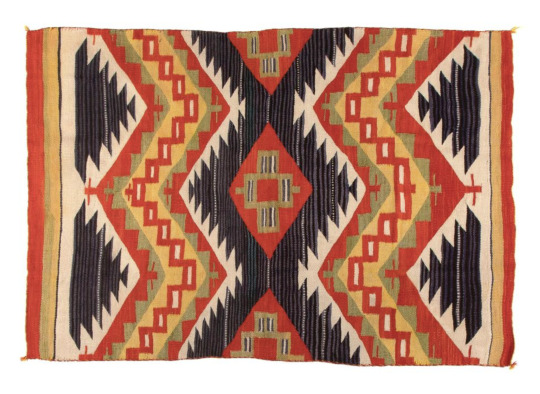
Diné [Navajo]
Moki Blanket, ca. 1900
handspun wool, natural and aniline dyes; 75 x 51 3/4 in.
31 notes
·
View notes